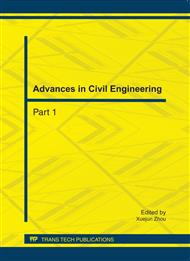p.3268
p.3277
p.3283
p.3287
p.3292
p.3298
p.3303
p.3308
p.3314
Accessibility Evaluation of Guangzhou Subway Network Based on Space Syntax Model and GIS
Abstract:
Based on the current condition of Guangzhou subway network, the authors used GIS methods and extended the space syntax theory to analyze the accessibility of the subway network, and compared with actual passenger flow. The results show: 1)Space syntax is practicable to measure the accessibility of subway system; 2)Among all sections by division, the accessibility of Tiyuxilu-Chen Clan Academy is the highest, the accessibility of Yantang-Panyu Square is the second highest, while the accessibilities of Jiaokou–Xicun and Dongchong–Jinzhou are the lowest, the accessibility of Xilang -Chen Clan Academy is the second lowest; 3)The accessibility level of subway and actual passenger flow have a positive correlation, the higher the accessibility, the larger the passenger flow; 4)As a whole, line 1 has the highest accessibility and the largest passenger flow, followed closely by line 3. Their departure frequency and number of carriages should be properly increased to relieve passenger flow pressure. Line 4 has relatively low accessibility and less passenger flow, so it should appropriately decrease train frequency or extend departure interval to reduce operating cost at present. Certainly, space syntax inevitably has its limitations, but after proper extension, the space syntax method can be used to instruct traffic reconstructing and urban planning etc.
Info:
Periodical:
Pages:
3292-3297
Citation:
Online since:
September 2011
Authors:
Price:
Сopyright:
© 2011 Trans Tech Publications Ltd. All Rights Reserved
Share:
Citation:


